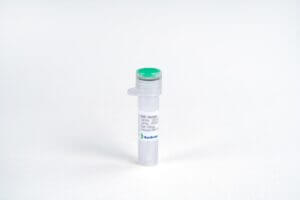500g
Showing 1401–1450 of 3098 results
-

Hydrazine Sulfate, CP
$95.50 Add to cart View Product DetailsHydrazine Sulfate, CP
-

Hydrazine Sulfate, CP
$413.79 Add to cart View Product DetailsHydrazine Sulfate, CP
-

Hydrazine Sulfate, Crystal, Reagent, ACS
$264.91 Add to cart View Product DetailsHydrazine Sulfate, Crystal, Reagent, ACS
-

Hydrazine Sulfate, Crystal, Reagent, ACS
$1,222.06 Add to cart View Product DetailsHydrazine Sulfate, Crystal, Reagent, ACS
-

Hydrazine, Monohydrate (79 Percent)
$59.31 Add to cart View Product DetailsHydrazine, Monohydrate (79 Percent)
-

Hydrochlorothiazide, USP
$1,425.68 Add to cart View Product DetailsHydrochlorothiazide, USP
-

Hydrocortisone Acetate, Micronized, USP
$3,698.93 Add to cart View Product DetailsHydrocortisone Acetate, Micronized, USP
-

Hydrocortisone, Micronized, USP
$3,681.12 Add to cart View Product DetailsHydrocortisone, Micronized, USP
-

Hydroquinone
$52.99 Add to cart View Product DetailsHydroquinone
-

Hydroquinone, Crystal
$126.39 Add to cart View Product DetailsHydroquinone, Crystal
-

Hydroquinone, USP
$407.18 Add to cart View Product DetailsHydroquinone, USP
-

Hydrous Benzoyl Peroxide, 75 Percent, USP
$440.94 Add to cart View Product DetailsHydrous Benzoyl Peroxide, 75 Percent, USP
-

Hydroxyethyl Cellulose, (200-300mPa.s, 2 Percent in Water at 20deg C)
$99.67 Add to cart View Product DetailsHydroxyethyl Cellulose, (200-300mPa.s, 2 Percent in Water at 20deg C)
-

Hydroxyethyl Cellulose, (4,500-6,500mPa.s, 2 Percent in Water at 25deg C)
$99.67 Add to cart View Product DetailsHydroxyethyl Cellulose, (4,500-6,500mPa.s, 2 Percent in Water at 25deg C)
-

Hydroxyethyl Cellulose, (800-1,500mPa.s, 2 Percent in Water at 20deg C)
$99.67 Add to cart View Product DetailsHydroxyethyl Cellulose, (800-1,500mPa.s, 2 Percent in Water at 20deg C)
-

Hydroxyethyl Cellulose, 100 cP, NF
$192.34 Add to cart View Product DetailsHydroxyethyl Cellulose, 100 cP, NF
-

Hydroxyethyl Cellulose, 2,000 cP, NF
$336.26 Add to cart View Product DetailsHydroxyethyl Cellulose, 2,000 cP, NF
-

Hydroxyethyl Cellulose, 3,400 cps
$187.24 Add to cart View Product DetailsHydroxyethyl Cellulose, 3,400 cps
-

Hydroxyethyl Cellulose, 5,000 cP, NF
$202.29 Add to cart View Product DetailsHydroxyethyl Cellulose, 5,000 cP, NF
-

Hydroxylamine Sulfate
$36.58 Add to cart View Product DetailsHydroxylamine Sulfate
-

Hydroxylamine Sulfate, Reagent, ACS
$248.52 Add to cart View Product DetailsHydroxylamine Sulfate, Reagent, ACS
-

Hydroxypropyl Cellulose, (1,000-4,000mPa.s, 2 Percent in Water at 20deg C)
$186.71 Add to cart View Product DetailsHydroxypropyl Cellulose, (1,000-4,000mPa.s, 2 Percent in Water at 20deg C)
-

Hydroxypropyl Cellulose, (150-400mPa.s, 2 Percent in Water at 20deg C)
$186.71 Add to cart View Product DetailsHydroxypropyl Cellulose, (150-400mPa.s, 2 Percent in Water at 20deg C)
-

Hydroxypropyl Cellulose, (3-6mPa.s, 2 Percent in Water at 20deg C)
$170.30 Add to cart View Product DetailsHydroxypropyl Cellulose, (3-6mPa.s, 2 Percent in Water at 20deg C)
-

Hydroxypropyl Cellulose, 4,000-6,500 cP, NF
$216.14 Add to cart View Product DetailsHydroxypropyl Cellulose, 4,000-6,500 cP, NF
-

Hydroxypropyl Cellulose, 75-150 cP, NF
$230.12 Add to cart View Product DetailsHydroxypropyl Cellulose, 75-150 cP, NF
-

Hydroxypropyl Methylcellulose, 100 cP, FCC
$229.37 Add to cart View Product DetailsHydroxypropyl Methylcellulose, 100 cP, FCC
-

Hydroxypropyl Methylcellulose, 4,000 cP, FCC
$215.40 Add to cart View Product DetailsHydroxypropyl Methylcellulose, 4,000 cP, FCC
-

Hydroxypropyl Methylcellulose, 50 cps, FCC
$229.37 Add to cart View Product DetailsHydroxypropyl Methylcellulose, 50 cps, FCC
-

Hydroxyurea, USP
$7,202.76 Add to cart View Product DetailsHydroxyurea, USP
-

Hypromellose, Substitution Type 2208, 100 mPa.s, USP
$211.43 Add to cart View Product DetailsHypromellose, Substitution Type 2208, 100 mPa.s, USP
-

Hypromellose, Substitution Type 2208, 100,000 mPa.s, USP
$194.89 Add to cart View Product DetailsHypromellose, Substitution Type 2208, 100,000 mPa.s, USP
-

Hypromellose, Substitution Type 2208, 3,550 mPa.s, USP
$198.55 Add to cart View Product DetailsHypromellose, Substitution Type 2208, 3,550 mPa.s, USP
-

Hypromellose, Substitution Type 2910, 4000 mPa.s, USP
$193.05 Add to cart View Product DetailsHypromellose, Substitution Type 2910, 4000 mPa.s, USP
-

Hypromellose, Substitution Type 2910, 4000 mPa.s, USP
$379.56 Add to cart View Product DetailsHypromellose, Substitution Type 2910, 4000 mPa.s, USP
-

Hypromellose, Substitution Type 2910, 50 mPa.s, USP
$193.05 Add to cart View Product DetailsHypromellose, Substitution Type 2910, 50 mPa.s, USP
-

Ibuprofen, USP
$502.53 Add to cart View Product DetailsIbuprofen, USP
-

Ichthammol, USP
$240.26 Add to cart View Product DetailsIchthammol, USP
-

iFluor488-Protein L
$129.38 Add to cart View Product DetailsProtein L is a cell surface protein from Peptostreptoccocus magnus that binds to the variable light chains (kappa chain) of immunoglobulins without interfering with antigen binding. In contrast to IgG-binding proteins, such as protein A and protein G, which bind to the Fc region of immunoglobulins, protein L can be used for the detection and purification of mammalian kappa light chain antibodies of all classes. Since no part of the heavy chain is involved in the binding interaction, Protein L binds a wider range of antibody classes than Protein A or G. Protein L binds to representatives of all antibody classes, including IgG, IgM, IgA, IgE and IgD. Single chain variable fragments (scFv) and Fab fragments also bind to Protein L.
-

iFluor647-Protein L
$129.38 Add to cart View Product DetailsProtein L is a cell surface protein from Peptostreptoccocus magnus that binds to the variable light chains (kappa chain) of immunoglobulins without interfering with antigen binding. In contrast to IgG-binding proteins, such as protein A and protein G, which bind to the Fc region of immunoglobulins, protein L can be used for the detection and purification of mammalian kappa light chain antibodies of all classes. Since no part of the heavy chain is involved in the binding interaction, Protein L binds a wider range of antibody classes than Protein A or G. Protein L binds to representatives of all antibody classes, including IgG, IgM, IgA, IgE and IgD. Single chain variable fragments (scFv) and Fab fragments also bind to Protein L.
-

IFN-γ, Mouse
$280.31 Add to cart View Product DetailsSharing 41% sequence identity with human Interferon gamma (hIFN–γ), mouse IFN gamma (mIFN–γ)is a macrophage-activating factor.The active form of IFN–γ is an antiparallel dimer that sets off IFN–γ/JAK/STAT pathway. IFN–γ signaling does diverse biological functions primarily related to host defense and immune regulation, including antiviral and antibacterial defense, apoptosis, inflammation, and innate and acquired immunity.While IFN–γ–induced inflammatory cascade summons a variety of immune-related cell types, such as macrophages, natural killer (NK) cells and cytotoxic T lymphocytes (CTLs), IFN–γ is also implicated in resistance to NK cell and CTL responses and in immune escape in avariety of cancers.
-

Igepal(R) CA-720
$173.94 Add to cart View Product DetailsIgepal(R) CA-720
-

IL-5, Mouse
$664.13 Add to cart View Product DetailsInterleukin-5 (IL-5), produced by mast cells, T cells and eosinophils, is responsible for the activities attributed to eosinophil differentiating factor, B cell growth factor II and T cell-replacing factor (TRF). It can increase production and mobilization of eosinophils and CD34+ progenitors from the bone marrow. IL-5 plays an important role in inducing cell-mediated immunity against parasitic infections and certain tumors. IL-5 also promotes differentiation of basophils and primes them for histamine and leukotriene release.
-

Imidazole
$99.67 Add to cart View Product DetailsImidazole
-

Imidazole, Reagent
$137.15 Add to cart View Product DetailsImidazole, Reagent
-

Imidurea, NF
$403.51 Add to cart View Product DetailsImidurea, NF
-

Imidurea, NF
$407.08 Add to cart View Product DetailsImidurea, NF
-

Iminodiacetic Acid
$316.95 Add to cart View Product DetailsIminodiacetic Acid
-

Iminodiacetic Acid
$58.01 Add to cart View Product DetailsIminodiacetic Acid
-

Indene, Stabilized with tert-Butylcatechol
$278.48 Add to cart View Product DetailsIndene, Stabilized with tert-Butylcatechol






